Scoop Investigation: Time Runs Out On South Pacific HIV/AIDS Crisis
Reporter Marietta Gross and Scoop co-editor Selwyn Manning examine this most important issue and report that HIV/AIDS in the South Pacific is insidiously working its way into isolated communities with an infection rate that threatens cultural, economic, and community stability. Experts interviewed say HIV/AIDS, not global warming, is the number one problem threatening Tuvalu's survival.
*******
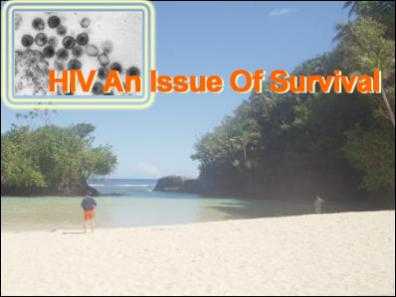
Index:
Introduction:
Typical Profile of
Transmission in the Pacific Region
Dealing
with Discrimination and Gender Discrimination
Parallels to Africa
Papua New Guinea
A Warning To A Vulnerable South Pacific
Auckland to Host the Pan Pacific Regional HIV/AIDS
Conference 2005
Social/Economical Effects On
The Community
The Challenge of Accurate Data
Collection
Pacific Church Leaders Slowly
Turning Cheek To Listen
Details Of Treatment
and Biology of HIV-infection: Dr Rod Ellis-Pegler.
References
HIV infection in the South Pacific has reached
a crisis point and in one case now threatens the extinction
of an entire race of peoples. Scoop investigations have
discovered that Tuvalu's population is in danger of
extinction unless urgent action is taken immediately. The
HIV infection crisis is about to be thrust into our midst.
Experts have told Scoop Media that this issue can no longer
be swept under the carpet, that the South Pacific as a
region must confront the reality that HIV has embedded
itself within cultures that consider the topic
forbidden. A major conference is to take place in Auckland
in October where medical clinicians, social leaders, Church
leaders and politicians will be immersed in the facts
detailing the rate of HIV infection among Pacific
populations, what must be done to reduce the rate of
infection, what can be done for those who are infected with
HIV, and how the region as a whole can pull together to
ensure the South Pacific does not follow in the wake of
Africa and Papua New Guinea. The Pacific Islands Forum
secretariat has also been working on the HIV issue – the
issue will be advanced when Pacific leaders meet at this
year's forum in Papua New Guinea. The Pacific is
notorious for sweeping issues under the carpet,
particularly issues that challenge the cultural fabric of
the Pacific way of life. Homosexual practise, violence
against women, and, the inability of women in some cultures
to say no to sex are paramount concerns among a Pacific
patriarchal code that prevents an open and honest debate on
HIV/AIDS from occurring – a debate that is essential should
the South Pacific have a chance at beating the HIV epidemic
and not fall into a figurative abyss titled
HIV/AIDS. Papua New Guinea has a similar HIV profile to
Micronesia, Solomon Islands, Kiribati where there is a
disproportionately high rate of escalation. But Fiji also
faces a crisis, as does Samoa, the Cook Islands group also
is witnessing an increase in the numbers of people with HIV
infection. Tonga, well there is an absence of official
information on the number of people infected with HIV, or
suffering from AIDS. New Zealand's rate has 21 people per
100,000 infected with HIV. Tuvalu's rate is 88 per 100,000.
New Zealand's rate suggests about 2400 to 2500 people are
infected with HIV. Tuvalu has 88 people. The information,
experts say, shows Tuvalu's population is at risk – not by
global warming but by the silent insidious killer infections
that inevitably result from HI-Virus. The United Nations'
UNAIDS organisation has indicated to Scoop Media it is
extremely worried about the rapid rise of HIV infection in
the Pacific. And Pacific Islands AIDS Foundation (PIAF)
spokesperson, Maire Bopp Dupont too believes Tuvalu faces a
crisis of survival. Ms Bopp Dupont, herself HIV-positive,
said Tuvalu has suffered due to its small population and "by
the fact that HIV/AIDS has made its bed amongst seafarers".
"HIV will surely threaten the nation with collapse, when
(it infects the) workforce in other areas of activity,
particularly when senior staff become infected. "For
Tuvalu," Ms Bopp Dupont said "HIV/AIDS could be quicker to
harm than the sea level rise. That is something to
consider." Globally the numbers of women
living with HIV/AIDS have already gained on those of men, in
some places in Asia and in the Pacific women have even got
ahead of men. The foremost form of transmission in the South
Pacific region is unprotected sexual intercourse, whereat
heterosexual partners represent the fastest growing and/or
largest affected group in most places. The ABC policy
(Abstaining from sexual activity, Be faithful and Condom
use), which has helped Uganda to confine the epidemic, may
be disputed due to a changed profile of transmission.
"This suggests that like in Cambodia married women in the
Pacific (or at least in PNG) are in a similar situation –
low risk, high vulnerability for example they have few
partners, often only one, so their exposure or risk level
remains low, but they are highly vulnerable because of
social situations that don't allow them to negotiate their
sexual encounters with their partners or husbands (who
are often engaging with multiple partners with considerably
higher risk factors such as commercial sex workers) and
women who as yet don't have an adequate system of protection
that they can control." Stuart Watson said this means the
emphasis many sexual health programmes put on abstinence and
fidelity actually put women at risk. "They abstain from
sex outside of marriage, remain faithful to one partner, but
the partner isn't doing the same and thus making these women
more vulnerable," Stuart Watson said. Take Uganda (as
mentioned above): back in 1986 the Ugandan political
leadership publicly supported HIV/AIDS awareness campaigns
within their country. Dr. Trevor Cullen, of the Edith
Cowan University said: "This proved a key factor in
quickening a substantial community response towards fighting
the disease. The same is not true of many Pacific countries
that either through ignorance of the impending reality or
fear of negative publicity were unable to galvanize public
support. "It was left to outsiders, namely NGOs to do
their best. Many have done undertaken admirable initiatives
and projects. In recent years, however, PNG's National AIDS
Council (NAC) and the PNG media have worked hard to convince
all stakeholders about the dire consequences of continued
inaction," Trevor Cullen said. Religious leaders, he said,
are bound by their own laws and codes: "Many, I think, would
like to play a more public role but opt instead for a
pastoral message of care and compassion, and so avoid the
tricky issues of education and prevention. It's a great pity
because they are well-placed to deliver much clearer and
stronger messages. If contraceptives and condoms are the
problem, then one would think that an emergency situation
demands emergency measures." In Papua New Guinea as in
Africa and greater Asia there are still stories of people
being stoned to death because they are HIV-positive, or
being beaten or abandoned. PNG legislated in 2003 to
highlight and outlaw this problem. Newly elected prime
minister Sir Michael Somare was forced to address the rise
of HIV legislatively. Under the guidance of the United
Nations' UNAIDS PNG's legislation outlawed discrimination
and stigmatisation of people with HIV/AIDS and people
presumed to have HIV/AIDS. One of the driving factors
behind the law was due to the criminality of violence, but a
second factor was an acknowledgement of how intimidation and
victimisation targeting homosexuals, or those thought to be
carriers of HIV infection and also oppression of women was
preventing those who subscribe to high-risk groups from
coming forward for testing and treatment. These are quite extreme examples which may not
occur regularly, but, still, they make clear that action has
to be taken so that HIV-positive people are able to lead
their lives in dignity and as equitable part of society.
Isolation of HIV-positive people is definitely neither a
particularly useful nor a socially mature way of responding
to the spread of the disease. A number of NGOs have
already realised the need for action upon these issues,
including the AIDS Task Force and the Fiji Network of
Positive People in Fiji, the National AIDS Council and a
positive peoples' group in PNG - also the Pacific Islands
AIDS Foundation based in the Cook Islands headed by Maire
Bopp Dupont. These organisations have been working on a
range of different levels: On the one hand they recognise a
need for a change of the legislation, also being supportive
to policies put out by local authorities, but what might be
even more important on the other hand is trying to normalise
HIV by giving it a personal face. This is realised through
HIV-positive people themselves who act as peer educators
going into schools and together with the organisations
working with local villages and communities. Maire Bopp Dupont
explained: "The legal setting can help regulating
discrimination by discourage people from doing it but also
reassure non-positive or discourage positive that
transmitting the virus voluntarily is a crime. The
responsibilities are on both side and these need to be
reinforced. PIAF has set up a legal and human rights task
force to help improve legislations across countries, but
also educate Positive people themselves. However, legal
changes take time to happen. "Therefore, it is important
that we keep educating people towards individual
responsibility and safer and fairer behaviours. PIAF
believes that the real change is to come from the people
themselves. Therefore we assist and encourage greater
exposure of Positive Lives towards the learning of all our
people," Ms Bopp Dupont said. Stuart Watson, UNAIDS: "PNG
does have legislation and several other countries are
working on legislation that would criminalise such action.
Of course any physical harm to another person is already
covered under other legislation in all countries. The issue
is adherence to legislation and criminal codes and changes
in attitudes. Part of this is being done through advocacy
work by HIV positive people themselves – trying to
"normalise" HIV and put a personal face to the issue.
That's probably more important than any legislation. In PNG
a positive people's group (Igat Hope) has just been
launched. Fiji has the Fiji Network of Positive
People." Infection rates around the world are growing
disproportionately faster amongst women than among male
populations. The investigation of the reason therefore has
started and once they are entirely defined any effort has to
be undertaken to address these problems. On the one side
women must be given the ability to negotiate the use of
condoms, on the other side it's essential to discuss the
economic situation of women in places like PNG, where they
are forced into sex work, not by choice but since it's the
only option for them to stay alive. So is gender
discrimination as effective way to deal with
HIV/AIDS? Stuart
Watson, UNAIDS: "Definitely – women as I said above are more
vulnerable than men. Infection rates around the world
amongst women are growing disproportionately faster than for
male populations. We have to understand why this is so and
find ways to address this." New Zealand based Reverend Mua
Strickson Pua from the Pacific Islanders Presbyterian Church
of Aotearoa said: "Our Church is still attempting to redress
gender discrimination with cultural control processes. Hence
we still have some Pacific communities that will not select
women for eldership and ordination even though the Churches
national policy is very clear: no Gender
discrimination." Rev. Pua is an outspoken critic of
restrictive conservatism among the churches but believes the
message is slowly getting through to those who are the
"gatekeepers" of open and meaningful discussion. New Zealand AIDS Foundation's Rachael Le
Mesurier said: "Ten years ago PNG looked a bit like Fiji
looks like now. So we have got plenty of warning signs. What
we have to do is speed up the process even for places like
NZ, these twenty years was to raise discussion about sex and
sexuality, how human beings behave sexually and get into
that discussion, the issue of using condoms." Is this
statement supported by other experts? Yes. Some experts
(Trevor Cullen and Stuart Watson) were aware that the
potential of such a tragic development was existent, at
least in PNG. The rapid growth is fuelled by demographic and
cultural factors including ignorance and denial, poor health
facilities, no medicines or counselling, traditional taboos
that prevented discussion of sexual matters and a great deal
of fear and stigma attached to the disease. The infection
rates are pushed also by high rates of sexually transmitted
infections, young and sexually active population and high
unwanted pregnancy rates. Dr. Trevor Cullen said, "Having
lived in Malawi in southern Africa from 1981 – 1991, I saw
how the disease suddenly appeared in 1984 and within 6
years, nearly 10 per cent of the population were infected
with the HIV virus. The disease spread like a bush fire...
Similar factors for its spread exist in PNG." The first
HIV-case was detected in CNMI (Saipan) in 1984 and since
then the epidemic has made its way to every country and
territory in the Pacific except for Nuie and Tokalau, which
haven't reported any cases yet. A disturbing classification
figure was recently revealed by Fiji: its rate is increasing
by roughly 22 per cent per annum. Stuart Watson said: "On
top of this, the small states of the Pacific are more
vulnerable – could a country of only 10,000 people with most
of the HIV cases related to the main income earning sector
sustain a 1%, or 5% or 10% infection rate?" Uganda, when
compared to other African nations, demonstrated with its ABC
education policy that a significant difference can be
achieved in reducing HIV infection rates when politicians
and community leaders get behind a pro-active strategy.
Its success with the ABC policy is a reminder to all
nations to learn from the experiences of others. But the
South Pacific can also learn from Africa's mistakes. The
South Pacific's decision makers (political, tribal and
church leaders) need to commit to a plan urgently if the
Pacific region wants to avoid a situation marked by death
and agony, similar to Africa where economies and cultures
have been destroyed. Where war, conflict, civil unrest
thrives, the rates of HIV infection climb. This has been the
experience of Africa's nations where the HIV/AIDS epidemic
now has caused community collapse and has threatened the
death of whole generations. Military conflicts encourage
the spread of HIV by sexual abuse of the "enemy". Moreover
people have to worry about their basic survival, escaping
violence, bullets, so that there is no room left for other
concerns. Research globally points out that uniformed armed
personnel are five to seven times more likely to contract
sexually transmitted infection than their civilian
counterparts. Papua New Guinea and Bougainville has faced
war, conflict and ongoing civil unrest for the past 16
years, where estimates place the number of deaths resulting
from the conflict at 15,000. It too has experienced the
highest rate of infection to be found in the South Pacific
where deaths from HIV infection continue to stack up year
after year – long after the soldiers put down their arms or
left its shores. The PNG/Bougainville conflict was the
longest seen in the South Pacific. It began as a dispute
over land and alleged environmental damage between islanders
and multi-national copper mining companies. It soon became
an independence war involving government forces, armed
militias, mercenaries. In 1994 former PNG Prime Minister
Sir Julius Chan signed an agreement with several
Bougainville secessionist leaders that allowed a
transitional administration in Bougainville. Bougainville
Revolutionary Army leaders did not sign and continued to
fight for independence. The following year a Bougainville
Transitional Government was sworn in under leadership of
Theodore Miriong. Miriong's leadership was short-lived with
him being assassinated at his home in south-west
Bougainville in 1996. In 1997, Chan hired foreign
mercenaries from Sandline International to support
government troops in Bougainville. The move established arms
trading lines, brought in foreigners from abroad among them
arguably soldiers carrying the HIV infection – it is
theorized that this too contributed to a vulnerability to
the epidemic already entrenched in PNG. A PNG Army mutiny
followed as did civil unrest. Chan was forced to resign.
Human rights organisations reported widespread abuses on
both sides, including rape, torture and
executions. UNAIDS, which has an office in PNG and Fiji,
reported in 2003 that Papua New Guinea had the highest
reported rate of HIV infection in Oceania with up to 28,000
people estimated to be HIV positive and with an estimated
HIV prevalence of almost one percent of all pregnant women
attending antenatal clinics in Port Moresby. The country's
epidemic appeared largely heterosexually driven. Only 15
percent of sex workers reported regular condom use and HIV
prevalence among PNG's sex workers had reached 17 percent by
2003. Edith Cowan University's Dr Trevor Cullen said:
"Both UNAIDS and WHO strongly suggest that current figures
for HIV /AIDS in PNG do not reflect that the actual reality
and so give a false sense of security. One central problem
is data collection. A meeting in Port Moresby of medical
experts (November 2004) revealed how only seven of the 20
provinces in PNG had some sort of surveillance. People think
the epidemic is still out at sea. But it came ashore years
ago." Sexually transmitted disease rates are key
indicators of how open a society is for HIV infection to
take a hold – and other South Pacific island nations are
vulnerable. Again UNAIDS reported in 2003 that: in Vanuatu
28 percent of pregnant women had Chlamydia and 22 percent
had Trichomonas infection. Samoa had 31 percent of pregnant
women with Chlamydia and 21 percent had Trichomonas
infection. War was not the only crisis to afflict PNG -
Later in 1997, PNG declared a state of disaster after a
drought killed over 1000 people and a further 1.2 million
risked starvation. In July 1998 Tsunamis hit north-west
coast obliterating villages and killing 3000
people. August 2002, Sir Michael Somare was elected as
PNG's prime minister for a third time. In August 2004
Australia deployed police to help fight rampant crime
including elevated crime rates for sexual crime. By December
2004, Australia warned PNG was on course for social and
economic collapse. In May 2005 Australia withdrew its police
officers after the PNG Supreme Court ruled the deployment as
unconstitutional. On May 27 2005, Bougainville islanders
went to the polls to elect their first autonomous
government. By December 2000, the then PNG prime minister
Sir Mekere Morauta described HIV/AIDS as a "silent
catastrophe". And in 2003 his replacement Sir Michael Somare
was forced to address the rise of HIV legislatively. Under
the guidance of the United Nations' UNAIDS PNG's legislation
outlawed discrimination and stigmatisation of people with
HIV/AIDS and people presumed to have HIV/AIDS. It provided a
regime of voluntary informed consent for HIV-testing, with
pre-test counselling and post-test support; ensured
confidentiality of medical records and HIV/AIDS information,
and made provision for contact tracing; criminalised the
deliberate or intentional transmission of HIV, and provided
a means of warning and discouraging people who knowingly
continue reckless behaviour that would or could endanger
others. But violence against those known to have HIV
infection continues, adding to a problem where people are
loathed to be tested. Commentators like Maire Bopp Dupont
suggests only education, explanation and hands-on advocacy
at community level can change attitudes, and she suggests
this will take time. It is accepted, stigma is a common
barrier to preventing the spread of HIV. Experts say
Papua New Guinea resembles Africa's HIV-affected nations of
five years ago. KEYPOINTS: From October 25
to 28 2005 the Pan Pacific Regional HIV/AIDS Conference is
going to take place in Auckland, which is about to raise the
issues of leadership, engaging communities, improving care
and building knowledge. Also topics like mobility, culture,
gender and vulnerability will be discussed within the
frameworks and parameters of the Pacific. In total the
Auckland conference means a remarkable occasion for the
South Pacific region, as the Pacific usually gets buried
within the traditional Asia Pacific gathering. The aim of the conference is to bring any concerned persons together, particularly People Living with HIV/AIDS, leaders,caregivers and so on. One of the interview partners stated
the importance of getting the political leaders of the
Pacific countries to attend the conference, as sending
uninformed delegates lacking in interest and influence would
help no one. Stuart Watson, UNAIDS: "We hope all the
issues you've raised above related to mobility, culture,
gender, vulnerability, etc will be raised but within the
frameworks and parameters of the Pacific. There has only
ever been one other opportunity to bring together the
Pacific as opposed to Asia Pacific (where the Pacific
usually gets buried) – so this is extremely important to
help improve our knowledge of the situation in the region
and how we respond to it." Once again the conference
should show the human face of HIV, to which everyone is
potentially vulnerable. There is no imaginary fence that
protects people from this disease, which affects real people
in our communities. Moreover the participants should
concentrate on the lack of drugs for slowing the onset of
AIDS. Inhabitants of New Zealand, Australia, Tahiti or New
Caledonia can easily obtain the necessary medication. But a
majority of HIV-patients in PNG and other Pacific countries
have no access to the vitally important medicines. Trevor
Cullen: "There are, however, no such drugs for the majority
of those living with HIV in PNG and other Pacific countries.
So, it's a double whammy - no medicines and no other
support." Fiji for example has reported 142 HIV-cases by
the end of 2003, but has received funding of ARV
(anti-retroviral)-drugs for only 40 people. Media have
played a controversial role in giving the epidemic its
image. They are said to have adopted a reactive rather than
proactive approach. Experts demand a change of their
attitude towards realizing their responsibility and
involving educational and preventative messages. After the
conference a two-days-workshop is going to take place also
in Auckland, which will bring 30 to 40 Pacific tribal
leaders together. This meeting is funded by UNAIDS and will
be specifically looking at the progress of the strategic
action points agreed in March
2004. The high prevalence of HIV/AIDS in
small islands communities of the Pacific threatens to be
widespread and devastating. It poses an economic, social and
security threat against the future of each country,
communities, and people. A charismatic advocate for
HIV/AIDS awareness from the Cook Islands is Maire Bopp
Dupont who herself is HIV-positive. Ms Bopp Dupont told
Scoop Media that beyond the shock and trauma of discovering
one is infected with the virus, and beyond realisation of
how prevalent HIV-infection is among the peaceful islands
and atolls of the Pacific is understanding the loss of
income it generates for whole families: "Which is often
followed by a loss of opportunities for the person with the
virus, the partner and the children who have less chances to
have an education. "If the person diagnosed with HIV is
the main or sole income earner of the family, this loss has
a fatal impact on the survival of the household," Ms Bopp
Dupont said. "For Tuvalu," Ms Bopp Dupont said "HIV/AIDS
could be quicker to harm than the sea level rise. That is
something to consider." The result of the disease in the
Pacific means it will take out work forces, take out
parents, mothers and fathers, it means that there will be a
whole generation that is being lost, it takes the guts out
of the economy, takes the guts out of the culture. Stuart
Watson of UNAIDS said: "We are also certain that the issue
of men having sex with men is well under reported and
understood because of cultural and religious factors." A
common criticism highlighted by every expert contacted for
this investigation is that leaders of the Pacific, for
cultural reasons, have had their "heads in the sand for too
long" – that, it is hoped, is about to change.
Ministries of Health are the first
source for cumulative number of reported cases. They are
collected through their testing and monitoring structures at
national level through hospitals and clinics. As this
Scoop Media investigation has discovered, the accuracy of
reported numbers must be considered the tip of the HIV
iceberg. The United Nations suggests that in the South
Pacific each reported case represents three or four "unknown
cases". In Papua New Guinea this ratio increases to
10. "Actual numbers are most likely to be higher than that
we know of today. The under-estimation of HIV/AIDS cases is
very much a result of the low testing and monitoring
capacity. Some could argue that this hides a deliberate act
from governments to "keep it under the carpet" or an
ignorance on the issue itself," Maire Bopp Dupont
said. The United Nations' UNAIDS wing recently began to
collate behavioural and biological data sampling populations
in seven Pacific Island countries. But analysed data from
these studies will not be available for some months yet. Its
representative Stuart Watson told Scoop Media: "We hope the
data derived from this Second Generation Surveillance will
provide us with better information on which to base
interventions, education and advocacy programmes." This
revelation of under-reporting of HIV infection rates offers
insight into how insidious this disease is. "We very
often see people who had been tested for reasons of chance
or if they happen to be in an at risk group, which, normally
in this country, are men who have sex with men," Dr
Ellis-Pegler said. "For people who are not born in this
country, predominantly people that come in under refugee
schemes or asylum seekers, very often present to us further
down the track of HIV infection. Some of them are grievously
ill." He said this is because HIV infection is "a chronic,
creepy, low-grade infection with an agent which basically
attacks cells central to your immune system's
integrity. "I often tell my students if I had been Hitler
and wanted to invent a nasty germ and to decide where it
might attack in a sense to maximize misery, this (HIV
infection) wouldn't have been a bad selection. It goes right
to the core in the immune system and just gnaws away for
years and years," Dr Ellis-Pegler said. He said on
average, eight to ten years after the moment of infection a
patient's CD4 count (a biological test that indicates the
strength of an individual's immune system) reaches about
200 cells per cubic millimetre: "Which is the time when we
statistically know that things are going to start go
wrong." Therefore, when one considers the official HIV
infection rates collated in the South Pacific, one can
appreciate that the figures while representing findings
discovered in 2003, actually more accurately reflect the
numbers of those infected by the disease perhaps eight years
earlier. He said Pacific Churches
and Pacific leaders have a long way to go before true
dialogue on HIV infection can take place: "As an ordained
Minister who works in the Pacific Nations communities I am
disappointed with the Churches' lack of vision and theology
when addressing HIV/Aids," Rev. Pua said. "The Pacific
Islands' Church is the corner stone of our conservative
Pacific communities. Thus for some Churches and Faith
communities they do see their role as being gate keepers.
Yet the Pacific Church is being challenged to get involved
and interact with its Pasifikan Gay and Lesbian communities.
This can only happen with good will and a commitment to each
other. At this stage it is early days and there is a long
way to go." Conservatism, and a strict cultural observance
aligned to fundamental Christian values weaves through the
fabric of every day Pacific life. Pacific Churches and
leaders wield much power within communities and homes of
Pacific Islands families: Rev. Pua said therefore "it is
vitally important to engage with these educative processes
of social change for social justice to come into
being." And as New Zealand AIDS Foundation's Rachael Le
Mesurier pointed out: discrimination is certainly an issue
in New Zealand and it is a far bigger issue in the
Pacific. But there is a reluctance from those outside of
the Pacific Islands community to comment and discuss the
cultural order that sweeps discussion of HIV under the
tapa-cloth covers and far from the light of day. New
Zealand physician, Dr Rod Ellis-Pegler said: "I don't
pretend to have any (deep knowledge) of Samoa, PNG… it's not
my field. I don't have any special wisdom or knowledge in
that field and I am concerned not to patronise people
there." But as
Rachael Le Mesurier, said: "We (New Zealand) are of the
Pacific, and our Prime Minister (Helen Clark) makes it quite
clear that she thinks that we are part of the Pacific. And I
think many people are looking at this part of the world,
they look at us, they see us as an island of the Pacific.
"With that approach, the Aids Foundation, we need to be
seen as part of the family and that means that we need to
look after our neighbours. We need to make sure that as a
region we are well protected against HIV and preventing it
from taking a hold. "We share the community, we (New
Zealand) have one of the largest Pacific populations outside
those Pacific countries here in New Zealand, we are a
Pacific country. So rather than saying what we should be
doing for the people over there it's more a matter of
anything we do for the local region will benefit and we are
one in the same," Rachael Le Mesurier said. Rev. Pua said
Pacific churches are still dominated by introspective
self-survival: "Our Pacific Churches have yet to grasp the
importance of being involved with proactive education.
"HIV and AIDS is still considered controversial, (the
view is) dominated by reactionary theology of fear and
punishment. Hence, until the Church begins its own self
education within its institutions and communities, it is not
ready to engage in a meaningful and proactive action with
other communities. "In the beginning stages it will be
action by individual groups within the Church who will
instigate this momentum for change," Rev. Pua
said. "We in the Pacific Churches need
to have materials' that understands the social context,
spiritual dimensions, and cultural processes for the change
mechanism to take place. "From our Pacific Churches
perspective, some educative-medical-materials engages
(affronts) faith and cultural ethnic communities in a
confrontational manner. It also comes across as
ethnocentric, secular, and white middle class. Thus it is
limited by its Mono-cultural practices of failing to
acknowledge that heterogeneous communities exist," Rev. Pua
said. But he insisted that in the current environment it
is critical that we do no give up: "Rather we have arrived
at a point and time in our journey that once again requires
us to restock and carry on. Theologically there is some
solid social change and social justice work going on but
quietly. The time is right to bring this once again to the
attention of our Churches and communities," Rev. Pua
said. So how far has the Church come in the last five
years? "I would say we have even further to go," Rev. Pua
said. "For Pacific Churches in harsh economic times its
members tend to practice a right wing political manner. We
are still in denial mode. Like an ostrich with its head in
the sand maybe the issue will go away. All those issues in
this section of the questionnaire are being addressed but it
needs a radical revamp and commitment to justice and aroha."
He said there are those inside the church that are
determined to advocate change: "Alliances and allies require
an understanding and commitment to work across the board.
Thus the Pacific Churches activists, on social issues,
social justice, and on a theological plain, need to work in
conjunction with those other educators and social change
activist outside the Church. Creating from a local level
process of change but also making those connections on a
multilevel come multitask praxis e.g. regional, national,
and internationally. "Thus a much more appropriate
cultural spiritual political process can be enacted upon for
these diverse institutions and communities. We must be
engaging in broad communication networks and communities
beyond our comfort zones. It's about greater risk taking but
more importantly engaging these institutions and
communities. Building relationships and earning their trust
whilst we all work towards true justice for all." The
Pasifikan Church and Faith communities are influential in
the Pacific. They are equally as powerful among the Pacific
Islands communities in New Zealand, particularly Auckland
and Manukau. Church leaders do have the "mana" to discuss
from their pulpit issues that will be discussed in the homes
and amongst the communities. Their social status in
conservative society assures them that issues they raise
will be attended to or noted. "Our Presbyterian Church
stance currently is liberal but the practices and reality is
right wing. At present our right wing conservatives are in
power hence the reflections of their theological and
political agendas. "We on the left wing (Rev. Pua is a
Green Party candidate for this year's General Election) of
the political theological spectrum are actively engaged in
the change processes, but thus there is a long way to go,"
Rev. Pua said. Amongst any Pacific Churches, he said,
there is a dominant right wing theology of discrimination
and oppression against Gays, Lesbians, and HIV AIDS. Gender
discrimination and sexual violence have yet to be addressed.
"Our Pacific leaders have not yet worked through these
issues other then the right wing political and theological
dogma. The seeds of true Aroha and Justice are out there
happening but it needs to be on a larger scale." New
Zealand AIDS Foundation's Rachael Le Mesurier, told Scoop
Media: "HIV/AIDS always finds the fracture point in our
society and what HIV/AIDS is doing in the Pacific, as it has
done and still does here, is it challenges the very
prejudices and options in our gender, in violence, and
discrimination. These sorts of issues are really parallel to
HIV/AIDS." An Interview With: Infectious diseases
physician Dr Rod Ellis-Pegler Dr Rod Ellis-Pegler
said testing is essential to ascertain the true rate of
infection among communities. Homosexual men who have
multiple partners should have an annual check for an HIV
infection. "Most of patients who are indigenous New
Zealanders come to us because of testing that's been done
because of general risk or some specific episode of
at-riskness." Therefore in New Zealand most people
diagnosed as being HIV positive are identified relatively
early. The New Zealand experience suggests however
immigrants who present with HIV infection, particularly
those who originate from developing nations, including
refugees and asylum seekers, often present "further down the
track of HIV infection". They, Dr Ellis-Pegler said are
"more likely to statistically to be symptomatic, some of
them are grievously ill." "HIV infection is a chronic,
creepy, low-grade infection with an agent which basically
attacks cells central to your immune system's
integrity… "It goes right to the core in the immune system
and just gnaws away for years and years. And we measure that
immune system integrity by measuring the concentration of
CD4 or T4 cells in the blood. We stumbled on it essentially,
the virus lives all over the body in a lot of cells, we
measure these cells, the CD4 cells or T4 cells – they are
lymphocytes and while found in all parts of the body, are
also in the blood stream, and it turns out that it's
possible to sample them and we count their concentrations.
"And with the passage of time with HIV infection we can
watch them as a measure of immune system depletion. It turns
out to be a very good prognostic indicator of when HIV
infection is about to severely affect the patient," Dr
Ellis-Pegler said. "In terms of CD4 counts over 500 cells
is normal. Over the passage of years, slowly this number of
cells falls, sometimes it goes fast, sometimes it's slower.
But on average 8-10 years after your moment of infection
your CD4 count reaches about 200 cells per cubic millimetre
- which is the time when we statistically know that things
are going to start go wrong." "The aim of modern medicine
is to pick people up before their cell count has got to a
point where they are crook and make decisions about the
right timing of medicines so we can stave off that falling
CD4 count. "And as people take these drugs, and we get on
top of their virus, and we suppress the amount of virus, and
we get the viral load down as low as we can get it, then the
immune system will start incredibly to reconstitute itself,"
Dr Ellis-Pegler said. "Our entire attack on this
infection, is as it is for virtually every infection, some
agent that targets the infecting agent. And that is what
these drugs work on, in the nuclei of infected
cells." Treatment for HIV
infection rests upon three families of drugs. Dr Rod
Ellis-Pegler explains: "You can compare them with
antibiotics we use to cure bacterial infections… but we have
many families or ordinary antibiotics. In
treating HIV infection there are only three families of
drugs, and as is typical when treating an infection, there
tends to be some degree of cross resistance within the
family. When treating ordinary infection there are a
large number of drug families to choose from – meaning cross
resistance is much less of a problem. With HIV infection,
there are not enough different families to enable us to
avoid cross resistance. Dr Ellis-Pegler said: "Having said
that, people are putting a lot of money into discovering
different families of drugs that might work against the
virus, but that is not easy and they are being discovered
painfully slowly at the moment." He said the treatment of
HIV infection has evolved over the last 15 years since the
drug AZT arrived: "And basically we use three drugs in every
person who is infected." "It was established very quickly
in trials that one drug was better than none - so people
were better with one rather with nothing. We then we
discovered two was better than one and then we discovered
that three was better than two," Dr Ellis-Pegler said.
Research showed that four drugs produced more side
effects than three: "So the world uses three drugs, and
basically we use one from every single family. And the
intellectual reason for that is one family will protect
somewhat against development of resistance in the other
family. CombiVir is taken with
Efavirenz which is from a totally different family. "If
costs are not an issue then that's what we use," Dr
Ellis-Pegler said. This cost equates to NZD$8000 to
NZD$10,000, per patient, per year. An alternative to
Efavirenz is Nevirapine which is from a totally different
family. "There are always debates about whether this
medicine is as good as the other, and the side effects are
different, but Nevirapine is somewhat cheaper." Dr
Ellis-Pegler said the differences are minimal: "They have to
do with how quickly we manage to lower the viral
concentrations in the blood stream. Nevirapine isn't so good
when there are huge amounts of viruses in the blood
stream. "Nevirapine is cheaper and is part of a
combination often quite widely recommended for countries
that are less developed. There are companies producing these
which can do so dramatically more cheaply than we do in the
West." India began producing generic versions of drugs
designed to treat HIV infection. However, while the west's
pharmaceutical companies "backed off" challenging India's
right to manufacture the drugs on ethical grounds, India in
April signalled it would cease manufacturing copies of AZT,
3TC and Nevirapine. "I find India's decision a bit
surprising," Dr Ellis-Pegler said. So what are the side
effects from these drugs? "The truth is CombiVir is a
pretty easy pill to take. Side-effects include a little bit
of anaemia from the AZT component, but not a big deal and
something we notice when we measure it rather than the
patient experiences it. 3TC has so few side effects we
sometimes wonder if it is a drug! So CombiVir is a pretty
simple pill to take, maybe sometimes a bit of a headache
with it early on. "Efavirenz has central nervous system
side effects, and the most common thing is very vivid
dreams, quite a bizarre side effect. That generally lasts
only for a few nights. "We often tell people to start
Efavirenz on Friday night. The other thing this can do is
give you a rash, a nasty rash, it's a hypersensitivity
rash," Dr Ellis-Pegler said. The alternative Nevirapine
which is of the same family can cause more of a rash than
Efavirenz: "These are quite nasty rashes, and the thing we
do when first starting off, is to give one pill per day for
a fortnight and then go to twice a day, that seems to reduce
the risk of rash." Nevirapine affects the liver in about
20 percent of patients – women suffer this side effect more
than men. So are physicians able to prevent the virus
from advancing indefinitely? "No not indefinitely," Dr
Ellis-Pegler said. "There is a tiny group of patients that
are called long term non-progressors, who for reasons that
are not entirely clear over the long term do not (see the
virus) progress. Their cell count seems to hang in some
abnormal position, like 300, but nothing seems to happen.
And an aspect of this is understood in that some of them
have a strain of the virus that has a genetic defect that
seems to make it weaker. "There are some people that go
on for a long time. But in general, there is a depressing
fall in CD4 count. "There are about a quarter of our
patients whom we are following here that we are not
treating, we are just following. And we just check the CD4
count maybe every three months, six months, nine months, or
one year depending on their rate of CD4 fall." Do
these patients require medicine? "No medication at
all. The only preventative measures making sure they don't
transmit it to other people. "The prognosis for that group
is the prognosis for the whole of HIV infection, we know
from accumulated information that balancing risks with
balancing cost… and cost is a huge component of it. When a
patient's CD4 count dips below 300, at that point I am
starting to say 'well mate I think this is all getting
closer but looking at your rate of fall up until know and it
seems to be pretty consistent over the last four years, I
suspect in the next year you will have to begin
treatment'." "Other patients come in grievously sick, they
have already got complications, they may have got some sort
of particular pneumonia associated with HIV-infection. We
know before we have done a CD4 count on those people it will
be 20 or 15. "We know perfectly well that those patients
are already in trouble. And of course, as you might expect
you do not need to be Einstein to expect that patients that
come in with low CD4 counts in general do less well than
patients who have been followed and where we have made
appropriate decisions at the appropriate time. There are
people who have a CD4 count of 20 and come in crook… (in
these cases) we may only ever get their CD4 counts back to
200-250." And what is the difference between HIV
infection and AIDS? "AIDS is a historical diagnosis.
AIDS of course was the first thing that was defined in
America in 1983. Doctors simply started noticing in New York
in particular men with these curious tumours. Dermatologists
first noticed it. And these were incredibly rare tumours
seen in old men and in particular men from a Jewish
background. And another dermatologist would say 'I saw two
last week and they were both gay men.' That is how awareness
(of the disease) evolved." Doctors named the disease
Acquired Immuno Deficiency Syndrome. "AIDS is an
historical label. To be honest we know that nations count it
because it is imminently countable - the number of people
you have with AIDS. But the truth is AIDS is a moment ten
years after the infecting event occurred. From a public
health perspective it is of little relevance. It is
certainly relevant to people who have got it - don't get me
wrong - but from a public health sense you cannot focus on
people with AIDS, you need to focus on the problem eight to
10 years earlier," Dr Ellis-Pegler said. "Americans claim
to have identified HIV, but the French actually recognised
the virus first. And again they sat in a room like they
always do when they find new germs and ask what should we
call it? And they called it the Human Immunodeficiency
Virus. "And so AIDS is just right down toward the unhappy
end. For the clinical problems that are virtually invariable
after varying periods of time for people who have been
infected with HIV. It is an absolute consequence of HIV.
People in our unit do not think of AIDS to be honest. We
talk about HIV infection all the time. We are required by
Ministry of Health government statute to report AIDS. We do
not report HIV infection or notify it to use the technical
term. "HIV numbers are actually much better because they
are collected spontaneously and anonymously by the three
laboratories in New Zealand that do HIV testing. And while
HIV infection is not notifiable, in the sense that I as a
doctor must send the health department a piece of paper
notifying it, the HIV infection is well collected in numbers
because it is done totally anonymously as all tests are
coded and are filed through to Dunedin." So is the
incidence of HIV among heterosexual women rising here in
NZ? "Yes it is. There's no question of it, if you take
the question of homosexual men - the epidemic has been
dominated in this country by men who have sex with men. But
as the years have gone by the heterosexual curve has
steadily crept up and of course that is in both men and
women who are heterosexual. With men, you cannot be
absolutely certain that they are telling you the truth that
they are heterosexual or homosexual in nature and that is
everyone's privilege but with women (with HIV) you know they
have acquired that from heterosexual sex assuming they are
not an intravenous drug user or something. "Yes the
incidence of HIV is increasing amongst the heterosexual
community in this country and it is increasing of course
among heterosexual women. That is predominantly an imported
epidemic. It is among either people who have lived in
countries with high heterosexual transmission, like
Zimbabwe, South Africa, South East Asia, and so on, and the
rate among heterosexual men has started to increase
too." So what advice has Dr Ellis-Pegler for Pacific
Islands physicians and leaders with respect to HIV
infection? "You have to be honest about it. "Here
(in New Zealand) we regard ourselves as western and
reasonably open about it. But not everyone wants everybody
to know they are HIV infected. It is just the way of the
world. Here, we keep their notes secure. When we dictate
letters on our system here we do it with a restricted
template so people cannot get in or hack their way into it.
We have inserted barriers so to ensure people's information
remains private. "You ask me about the Pacific, and I feel
uncomfortable because it is easy to pontificate from here
when you look at ourselves, neither are we New Zealanders
totally open about it." But would Dr Ellis-Pegler advise
the Pacific nations to: 1 - face up to the problem 2 -
initiate education and awareness campaigns 3 - put in pace
proactive measures to minimise where possible unnecessary
increase in the disease 4 - explore effective and
cost-affordable treatment for those with HIV
infection? "Correct. "You are absolutely correct and you
know these things and can state them more precisely than I
can, and are doing so there. "It does have to come out in
the open in the educational sense. And young people who bear
the brunt of this infection have to be given the opportunity
to know the information. "Openness is also about the
homosexual sex issue but there is also the "empowering
women" issue in some societies. "And again, I am sitting
in my office here pontificating about this, I do not claim
to be especially knowledgeable about it but there are
similar challenges in all societies including the Pacific
where women do not have the power to simply say no to sex."
What breakthroughs are being discovered? "We
desperately need a vaccine. Without a vaccine millions and
millions more people will die. "Yes much research has
gone into vaccine development and vaccine development is
difficult. "This virus produces more organisms per day in
an infected individual than any other infection that we have
ever known about. Because of the nature of the virus it has
a high mutation rate so we do not talk about HIV species we
talk about HIV quasi-species in trying to invent a word that
copes with this mutability and changeability such as we have
never experienced before. "For example your viral
population at the end of the day is inter-genetically,
structurally, just a tad different from what it was at the
beginning of the day. "That is an enormous ask of your
immune system to adapt to that sort of thing going on - it
is a huge challenge considering the very fact to me with my
sort of biological knowledge, the very fact that it takes
eight to ten years to wear out the immune system given that
sort of onslaught - it just beggars belief to me. "I
would never have guessed if someone had put this up to me as
a thesis and said 'go on have a crack at how long it takes
to blast hell out of the immune system with a virus that is
producing this many billion particles a day in change.' I
would have said 'oh I don't know a couple of months or
something.' "I find it biologically implausible the
reality of it - it is an extraordinary resistance. It is a
huge tick to the evolutionary mechanisms which have provided
us with our immune system that it can hang on for a long
time in the face of this sort of microbial onslaught. I find
it amazing. "But I don't find it amazing that they have
not found a vaccine… God knows how many years we have ahead
of us away from developing a vaccine for HIV infection.
"But without it, the only solutions are: modifying human
sexual behaviour. And that is not the easiest territory to
modify and we now have 25 years of the depressing evidence
of that. "Of all that is known, look at Zimbabwe, look at
China, look at India, the epidemic is just beginning there,
and the rate of HIV infection in these countries is soaring.
Papua New Guinea particularly is bad. It is possible to get
terribly terribly depressed about it. And yes millions more
people are going to die."
UNAIDS
Fact-Sheet - OCEANIA An estimated 35 000 people in
Oceania are living with HIV. In 2004, although less than 700
people are believed to have died of AIDS, about 5000 are
thought to have become newly infected with HIV. In 2004
there were 7100 women living with HIV in the region. The
annual number of new HIV diagnoses in Australia has
gradually increased from 650 in 1998 to about 800 in 2002. A
growing share of those diagnoses was in people who had
become infected in the previous year—which suggests that the
increase in new diagnoses could be linked to a revival of
unsafe sex. As is the case in New Zealand, HIV
transmission in Australia continues to be mainly through sex
between men, which accounted for more than 85% of new HIV
diagnoses from 1997 to 2002. Injecting drug use was
responsible for about 4% and heterosexual intercourse for
8.5% of newly acquired infections in that period. The per
capita rates of HIV diagnoses among indigenous people in
Australia since 1993 have been similar to those in
non-indigenous people. But higher proportions of diagnoses
have been among women and have been associated with
injecting drug use. At least half the estimated 14 000
people living with HIV in Australia are receiving
antiretroviral therapy, reflecting both the age of the
Australian epidemic and extensive treatment access. Papua
New Guinea, which shares an island with one of Indonesia's
worstaffected provinces, Papua, has the highest prevalence
of HIV infection in Oceania. Roughly 16 000 people of the
adult population of about 2.5 million were living with HIV
at the end of 2003. In Papua New Guinea, more than twice
as many young women (aged 15–24 years) as men have been
diagnosed with HIV. In 2003, for the first time, more HIV
infections were detected in women than in
men. HIV-infection levels appear to be low in other parts
of Oceania, but the data are extremely limited. On remote
islands, seafarers and their partners appear to be most at
risk and high rates of sexually transmitted infections are
being detected. Once HIV makes its way into the tiny
populations of island nations in Oceania, diffuse epidemics
are likely to follow. Prevention strategies that reduce and
treat sexually transmitted infections and that quickly
bolster AIDS knowledge among the general population are
urgently needed. PNG: Teachers Dying Of HIV/AIDS Could Force The Closure Of Some Schools In Papua New Guinea, education officials are warning many schools could be forced to close due to the ever-increasing number of teachers dying from HIV-AIDS related illnesses. The warning was made recently by the chairman of PNG's main insurance fund when he visited the country's Western Highlands Province to deliver cheques to the families of seven teachers who had died from the disease. Papua New Guinea currently has the highest number of HIV-AIDS cases in the Pacific region.
*Presenter/Interviewer:* Caroline Tiriman *Speakers:* David Gordon Mcleod, British High Commissioner to PNG ; Martin Kenehe, chairman, PNG National Teachers Insurance Limited. ENDS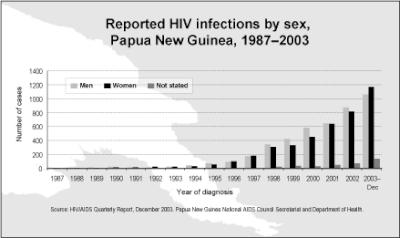 UNAIDS' Stuart Watson said: "We don't know beyond
anecdotal information at this point. The stats in PNG
indicated that the highest number of new infections detected
are amongst women who identify themselves as 'housewives'.
UNAIDS' Stuart Watson said: "We don't know beyond
anecdotal information at this point. The stats in PNG
indicated that the highest number of new infections detected
are amongst women who identify themselves as 'housewives'.
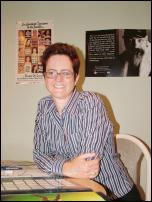 Rachael Le Mesurier, Executive director of the NZ AIDS Foundation, said
abuses such as these occur most particularly in PNG: "There
are more cases in the other islands we are beginning to
suspect that this sort of behaviour is also happening. But
it's hard to collect the information when we have very small
numbers, as there are at the moment, but they are
increasing," Ms Le Mesurier said.
Rachael Le Mesurier, Executive director of the NZ AIDS Foundation, said
abuses such as these occur most particularly in PNG: "There
are more cases in the other islands we are beginning to
suspect that this sort of behaviour is also happening. But
it's hard to collect the information when we have very small
numbers, as there are at the moment, but they are
increasing," Ms Le Mesurier said.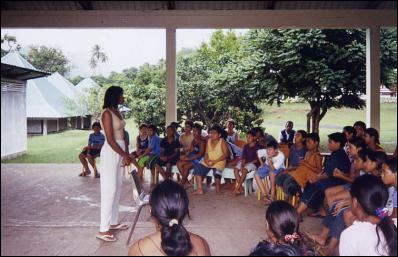
PIAF AIDS Ambassador
Irene Malachi doing outreach in Vanuatu. Photos courtesy
of the Pacific Islands AIDS
Foundation. Maire Bopp Dupont: "Yes, because it highlights
the reasons why women are becoming more and more infected
and also indicates some answers for actions to be undertaken
to save the reproductive partner of human being."
Maire Bopp Dupont: "Yes, because it highlights
the reasons why women are becoming more and more infected
and also indicates some answers for actions to be undertaken
to save the reproductive partner of human being."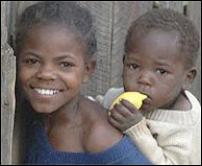 The current situation of PNG
awakes the fear that the Pacific region might be hit as
seriously as Africa, where some countries have a prevalence
of 33 to 39 per cent. Actually, PNG looks like Africa did
five years ago.
The current situation of PNG
awakes the fear that the Pacific region might be hit as
seriously as Africa, where some countries have a prevalence
of 33 to 39 per cent. Actually, PNG looks like Africa did
five years ago. 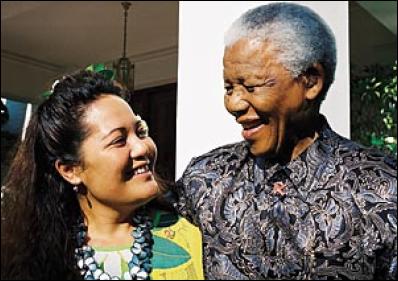
Maire Bopp Dupont and
Nelson Mandella. Image courtesy of
PIAF
Pacific Islands leaders
are being urged to attend the Pan Pacific Regional HIV/AIDS
Conference in Auckland. Tuvalu is
the typical example of such scenario and this is even more
accentuated by the fact that HIV/AIDS has made its bed
amongst seafarers, at the heart of the biggest economic
activity of the country. HIV will surely threaten the nation
with collapse, when (it infects the) workforce in other
areas of activities, particularly when senior staff become
infected.
Tuvalu is
the typical example of such scenario and this is even more
accentuated by the fact that HIV/AIDS has made its bed
amongst seafarers, at the heart of the biggest economic
activity of the country. HIV will surely threaten the nation
with collapse, when (it infects the) workforce in other
areas of activities, particularly when senior staff become
infected. 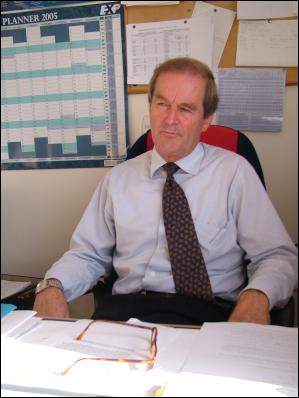 Infectious diseases physician Dr Rod
Ellis-Pegler heads New Zealand's largest HIV-infection
clinic at Auckland District Health Board. He told Scoop
Media that in New Zealand most people found to be
HIV-Positive are discovered relatively early and as a result
of voluntary testing. But this is not the case for people
who have arrived in New Zealand from abroad.
Infectious diseases physician Dr Rod
Ellis-Pegler heads New Zealand's largest HIV-infection
clinic at Auckland District Health Board. He told Scoop
Media that in New Zealand most people found to be
HIV-Positive are discovered relatively early and as a result
of voluntary testing. But this is not the case for people
who have arrived in New Zealand from abroad. Scoop approached the Reverend Mua
Strickson-Pua who is an Aotearoa-born Samoan also with
Chinese ancestry. Rev. Pua is from the Pacific Islanders
Presbyterian Church of Aotearoa.
Scoop approached the Reverend Mua
Strickson-Pua who is an Aotearoa-born Samoan also with
Chinese ancestry. Rev. Pua is from the Pacific Islanders
Presbyterian Church of Aotearoa.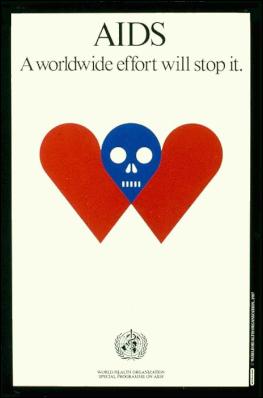 It is a mark of respect and a point
of genuine concern that should New Zealand or Australia wave
a figurative finger at Pacific leaders and say: "Come on,
get your head out of the sand and do something before it is
too late" then it may have the opposite effect.
It is a mark of respect and a point
of genuine concern that should New Zealand or Australia wave
a figurative finger at Pacific leaders and say: "Come on,
get your head out of the sand and do something before it is
too late" then it may have the opposite effect.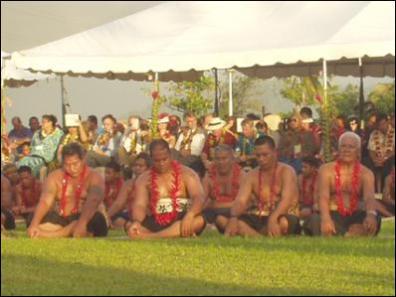
Rev. Mua Strickson Pua
said the Pacific's elders, religious, and community leaders
need to place discussion about HIV/AIDS on the
agenda.
Head of New
Zealand's largest HIV-infection clinic at Auckland District
Health Board.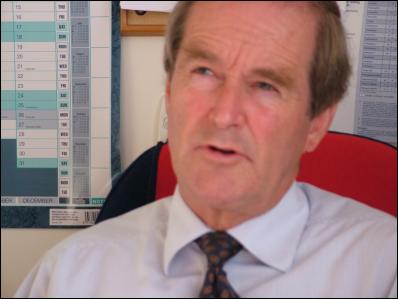
Dr Rod Ellis-Pegler -
head of New Zealand's largest HIV infection clinic at
Auckland District Health Board. AZT, and a second drug called 3TC are combined in
one capsule named CombiVir – the two drugs are within the
same family so the pharmaceutical company combines the two
drugs together in one pill.
AZT, and a second drug called 3TC are combined in
one capsule named CombiVir – the two drugs are within the
same family so the pharmaceutical company combines the two
drugs together in one pill.-- Ref.



 Martin LeFevre - Meditations: What Being “Inward Looking” Really Means
Martin LeFevre - Meditations: What Being “Inward Looking” Really Means Binoy Kampmark: Blinken Atrocious In A Dangerous World
Binoy Kampmark: Blinken Atrocious In A Dangerous World Jim Mikoz: Look Out Rocks … Oops Too Late
Jim Mikoz: Look Out Rocks … Oops Too Late Peter Dunne: Dunne’s Weekly - National And Labour Combine To Shut Out Greens
Peter Dunne: Dunne’s Weekly - National And Labour Combine To Shut Out Greens Ramzy Baroud: Voting Against Genocide - How Gaza Defeated The Democratic Establishment
Ramzy Baroud: Voting Against Genocide - How Gaza Defeated The Democratic Establishment  Alastair Thompson: Google's Support For Democracy And Media In NZ | Part 2
Alastair Thompson: Google's Support For Democracy And Media In NZ | Part 2